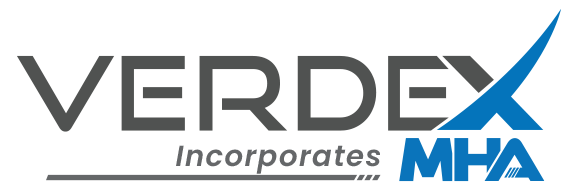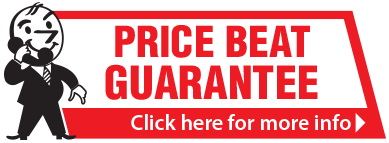Load Skates & Tow Tugs - Buyer's Guide
Date Posted:4 September 2024
Selecting the right load skates and tow tugs involves understanding your specific needs, evaluating key features, and ensuring safety and durability.
Load skates and tow tugs are essential tools for moving heavy loads with efficiency and ease. Used in industrial, warehouse, and manufacturing settings, these devices help streamline the movement of equipment, machinery, and other bulky items. This guide will help you understand the key features to consider when selecting load skates and tow tugs for your needs.
1. Assess Your Needs
Start by identifying your specific requirements:
- Load Capacity: Determine the maximum weight each load skate or tow tug needs to handle. Load skates and tow tugs come in various capacities, from a few hundred kilograms to several tonnes. Ensure the equipment you choose can support the heaviest loads you plan to move without compromising safety.
- Load Dimensions: Consider the size of the items you’ll be moving. Measure the dimensions of your typical loads to ensure that the skates and tugs can accommodate the size and shape of the equipment or machinery.
- Frequency of Use: Assess how often you will use the load skates and tow tugs. For heavy-duty, frequent use, invest in high-quality, robust models. For occasional use, more basic or budget-friendly options may be sufficient.
2. Key Features to Consider
When selecting load skates and tow tugs, focus on these essential features:
- Material and Build Quality:
- Load Skates: Typically made from steel or heavy-duty composite materials. Steel skates offer durability and strength but may be prone to rust; look for models with corrosion-resistant coatings. Composite materials are lighter and resistant to rust but may not offer the same level of strength.
- Tow Tugs: Usually constructed from high-strength steel or aluminium. Steel tugs are robust and durable, while aluminium tugs are lighter and easier to manoeuvre.
- Wheel Type and Configuration:
- Load Skates: Equipped with wheels that impact manoeuvrability and load distribution. Consider:
- Polyurethane Wheels: Offer good load-bearing capacity and are suitable for various floor types.
- Steel Wheels: Durable and suited for heavy loads but can damage floors.
- Rubber Wheels: Provide a smooth ride and are less likely to damage floors, ideal for indoor use.
- Tow Tugs: Look for:
- Pneumatic Wheels: Provide a smoother ride over uneven surfaces and are suitable for outdoor use.
- Solid Rubber Wheels: Durable and low-maintenance, suitable for various surfaces.
- Load Skates: Equipped with wheels that impact manoeuvrability and load distribution. Consider:
- Load Skate Design:
- Single vs. Multiple Skates: Single skates are suitable for smaller loads, while multiple skates can distribute weight more evenly and handle larger, heavier loads.
- Low vs. High Profile: Low-profile skates are easier to position under equipment, while high-profile skates can handle larger clearance requirements.
- Tow Tug Features:
- Manual vs. Powered: Manual tow tugs are operated by hand and are suitable for lighter loads or shorter distances. Powered tow tugs offer greater ease of use and efficiency for heavier loads or longer distances.
- Steering Mechanism: Check for ease of steering and manoeuvrability. Some models offer advanced steering features, such as articulated steering, for improved control.
3. Safety Considerations
Safety is crucial for the effective and safe operation of load skates and tow tugs:
- Load Stability: Ensure the load skates provide adequate support and stability to prevent shifting or tipping during movement. Features such as anti-slip surfaces and reinforced edges can enhance load security.
- Braking System: For tow tugs, ensure they have a reliable braking mechanism to prevent rolling or uncontrolled movement. Look for models with handbrakes or automatic braking systems.
- Ergonomics: Consider ergonomically designed handles or controls for ease of operation and to reduce strain on the user. Features like adjustable handles can accommodate different users and tasks.
4. Customisation Options
Customising your load skates and tow tugs can enhance their functionality:
- Size and Shape: Custom dimensions can accommodate unusual load sizes or fit specific operational requirements. Ensure the equipment’s size and shape meet your needs.
- Additional Features: Depending on your requirements, consider features such as:
- Load Securing Options: Additional straps or locking mechanisms to keep loads secure during transit.
- Protective Coatings: Extra coatings or finishes to enhance durability and resistance to environmental factors.
5. Build Quality and Durability
Invest in equipment that offers long-term reliability:
- Construction: Examine the build quality, including welds, joints, and overall sturdiness. Well-constructed skates and tugs will withstand heavy use and offer better durability.
- Manufacturer and Warranty: Choose reputable manufacturers that provide warranties. A warranty ensures the quality of the equipment and offers support for any potential issues.
6. Cost and Value
While cost is an important factor, focus on overall value:
- Budget vs. Features: Balance your budget with the features you need. Higher-quality models may have a higher upfront cost but can offer better performance and longevity, saving money in the long run.
- Long-Term Investment: View load skates and tow tugs as long-term investments. Durable, well-designed equipment can improve efficiency and reduce costs related to maintenance and replacements.




























































































































 Trolleys & Hand Trucks
Trolleys & Hand Trucks Cage Trolleys
Cage Trolleys Cleaning Carts & Trolleys
Cleaning Carts & Trolleys Construction Trolleys
Construction Trolleys Hand Trucks & Dollies
Hand Trucks & Dollies Laundry/Linen Trolleys
Laundry/Linen Trolleys Lifting Trolleys
Lifting Trolleys Order Picking Trolleys
Order Picking Trolleys Panel Cart Trolleys
Panel Cart Trolleys Platform Trolleys
Platform Trolleys Powered Trolleys
Powered Trolleys Shelf & Tiered Trolleys
Shelf & Tiered Trolleys Stainless Steel Trolleys
Stainless Steel Trolleys Tool Trolleys
Tool Trolleys Utility & Service Carts
Utility & Service Carts Lifting & Handling Equipment
Lifting & Handling Equipment Forklift Attachments
Forklift Attachments Jib Attachments
Jib Attachments Lifting Hoists & Pallet Hooks
Lifting Hoists & Pallet Hooks Load Skates & Tow Tugs
Load Skates & Tow Tugs Manual Stackers & Lifters
Manual Stackers & Lifters Pallet Jacks
Pallet Jacks Pallet Lifters
Pallet Lifters Pallet Rotators & Dispenser
Pallet Rotators & Dispenser Powered Pallet Trucks & Electric Lifters
Powered Pallet Trucks & Electric Lifters Scissor Lift Trolleys and Tables
Scissor Lift Trolleys and Tables Conveyor Equipment
Conveyor Equipment Conveyor Frames & Stands
Conveyor Frames & Stands Roller & Skate Conveyors
Roller & Skate Conveyors Ladders & Access Equipment
Ladders & Access Equipment Container & Yard Ramps
Container & Yard Ramps Ladders & Step Stools
Ladders & Step Stools Work Platforms & Crane Cages
Work Platforms & Crane Cages Drum Handling Equipment
Drum Handling Equipment Drum Storage & Bunding
Drum Storage & Bunding Drum Trolleys & Lifters
Drum Trolleys & Lifters Forklift Drum Handling
Forklift Drum Handling Dangerous Goods Storage & Spillage
Dangerous Goods Storage & Spillage Aerosol Cans Storage Cages
Aerosol Cans Storage Cages Bunded Pallets & Storage
Bunded Pallets & Storage Corrosive Goods Storage Cabinets
Corrosive Goods Storage Cabinets DG Storage & Trolleys
DG Storage & Trolleys Flammable Liquid Cabinets
Flammable Liquid Cabinets Forklift Gas Storage Cages
Forklift Gas Storage Cages Site Storage
Site Storage Spill Kits
Spill Kits Waste Handling & Bins
Waste Handling & Bins Bin Lifters & Tippers
Bin Lifters & Tippers Plastic Waste & Wheelie Bins
Plastic Waste & Wheelie Bins Steel Waste & Tipping Bins
Steel Waste & Tipping Bins Waste Carts
Waste Carts Shelving & Storage Equipment
Shelving & Storage Equipment Heavy Duty Cabinets
Heavy Duty Cabinets Heavy Duty Shelving
Heavy Duty Shelving Mega Bins & Pallets
Mega Bins & Pallets Packing & Workbenches
Packing & Workbenches Pallet Racking Accessories
Pallet Racking Accessories Parts Trays & Stor-Pak Bins
Parts Trays & Stor-Pak Bins Pegboard & Louvre Panels
Pegboard & Louvre Panels Plastic Bins & Crates
Plastic Bins & Crates Plastic Handling Solutions Bins
Plastic Handling Solutions Bins Plastic Pallets
Plastic Pallets Stack & Nest Bins
Stack & Nest Bins Stillage & Transport Cages
Stillage & Transport Cages Workplace Equipment
Workplace Equipment Modular Workbenches
Modular Workbenches Electric Height-Adjustable Workbenches
Electric Height-Adjustable Workbenches Floor Matting
Floor Matting General Workplace Equipment
General Workplace Equipment Industrial Weighing Scales
Industrial Weighing Scales Packaging Machinery
Packaging Machinery Stationery Cupboards
Stationery Cupboards Storage and Stillage Cages
Storage and Stillage Cages Tool Trolleys
Tool Trolleys Tooling Cabinets
Tooling Cabinets Safety Barriers, PPE & Signage
Safety Barriers, PPE & Signage Barriers & Bollards
Barriers & Bollards First Aid Equipment
First Aid Equipment Gloves, Knives and PPE
Gloves, Knives and PPE Signage
Signage Cleaning & Site Supplies
Cleaning & Site Supplies Cleaning Equipment
Cleaning Equipment Cleaning Trolleys
Cleaning Trolleys Rubbish Bins
Rubbish Bins Signs & Traffic Supplies
Signs & Traffic Supplies Construction Equipment
Construction Equipment Construction Trolleys
Construction Trolleys Waste Handling
Waste Handling General Site Equipment
General Site Equipment Concrete Equipment
Concrete Equipment Site Storage
Site Storage Lifting Equipment
Lifting Equipment Verdex Specials
Verdex Specials











